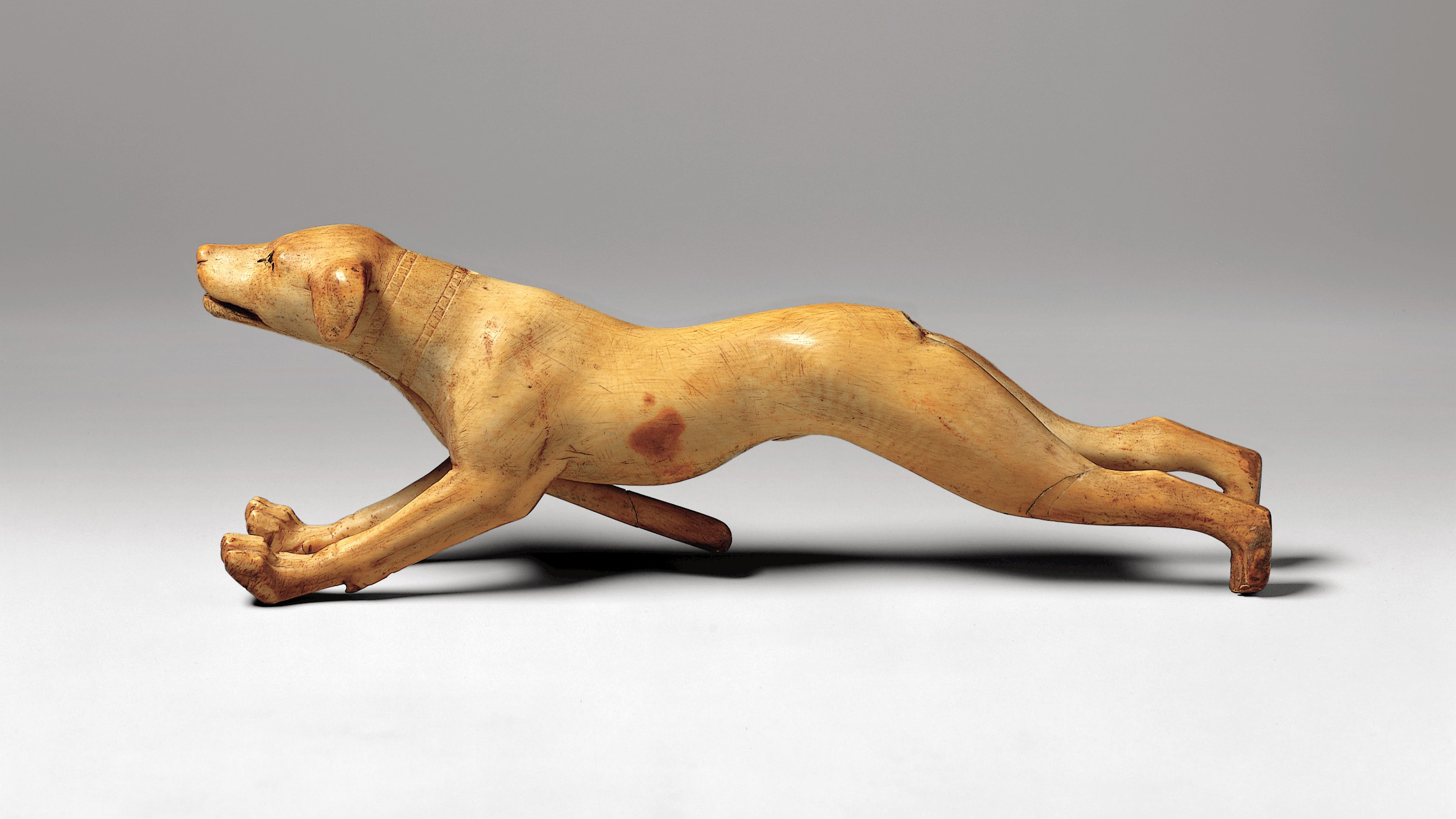
Name: Mechanical Dog
What it is: A moving dog sculpture carved from ivory
Where it is from: Egypt
When it was made: Around 1390 to 1352 B.C.
Related: Onfim’s doodle: A 13th-century kid’s self-portrait on horseback, slaying an enemy
What it tells us about the past:
Posed as if leaping through the air, this carved ivory dog opens its mouth as a lever is pushed up and down, revealing two lower teeth and a red tongue. The dog, which was discovered in an ancient Egyptian tomb, is a reminder that these domesticated canines have been beloved pets for at least 3,400 years.
The small dog sculpture, now at The Metropolitan Museum of Art in New York City, is made from elephant ivory. It is 7.2 inches (18.2 centimeters) long from nose to toes and shows the very good boy in a flying gallop, legs extended in the air. According to The Met, the lever that works the dog’s lower jaw, making it appear to bark, was originally held on by a piece of leather cord looped through small holes. At some point, the cord was replaced with a metal dowel secured in the dog’s shoulder.
The Met obtained the dog sculpture from the personal collection of Howard Carter, the Egyptologist who famously discovered King Tut’s tomb in the Valley of the Kings in 1922. It is unclear exactly where the dog was found, but The Met suggests it may have been placed in an elite tomb sometime during the reign of Amenhotep III, King Tut‘s grandfather, in the 14th century B.C. But its purpose is unclear; it may have been a toy or a magical ceremonial object.
Ancient Egyptians were quite fond of their dogs. While some were used for hunting, shepherding or as watchdogs, many were pets. This sculpture definitely represents a domesticated dog because the incised lines around its neck form a collar, Met curator emerita Catharine Roehrig wrote in a publication of the artifact.
During Egypt’s New Kingdom (1550 to 1070 B.C.), dog collars became increasingly ornate, often inscribed with the dog’s name, such as those found in the Tomb of Maiherpri. This dog sculpture does not have a name attached to its collar, but The Met notes that some common Egyptian dog names translate to Blackie, Son of the Moon and Good-for-Nothing.
MORE ASTONISHING ARTIFACTS
The breed of this sculpted dog is also unclear. Ancient Egyptians tended to prefer energetic dog breeds, and the ones often represented in their art include the ancestors of the hunting dog basenji, the Ibizan hound and the pharaoh hound.
Dogs were also linked with the god Anubis and with the afterlife in Egyptian mythology; they were sometimes seen as a kind of intermediary between the worlds of the living and the dead. Killing a dog — particularly a collared one — was a severe crime, and a family would have mourned the death of their dog as they would a human relative: by shaving their eyebrows. However, Egyptians believed that they would meet their dogs again in the afterlife, which is likely the reason they mummified them and buried them in special pet cemeteries.
